
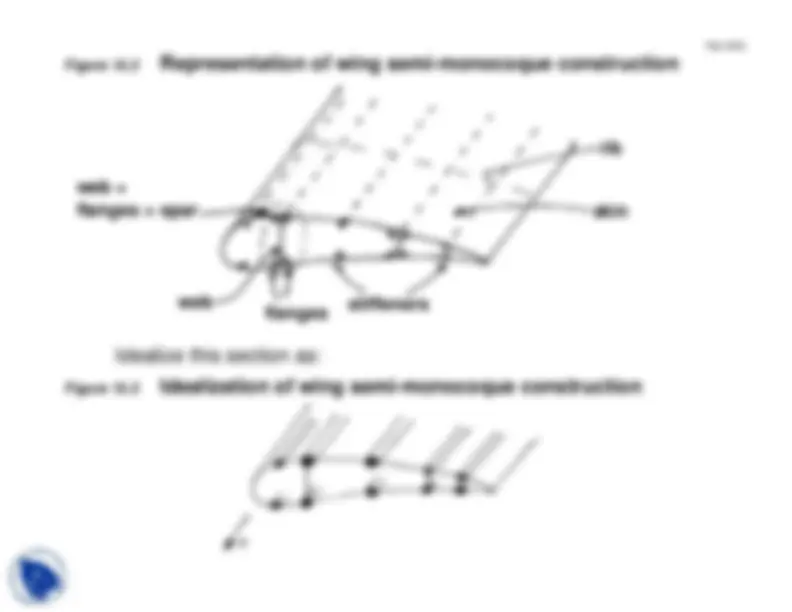
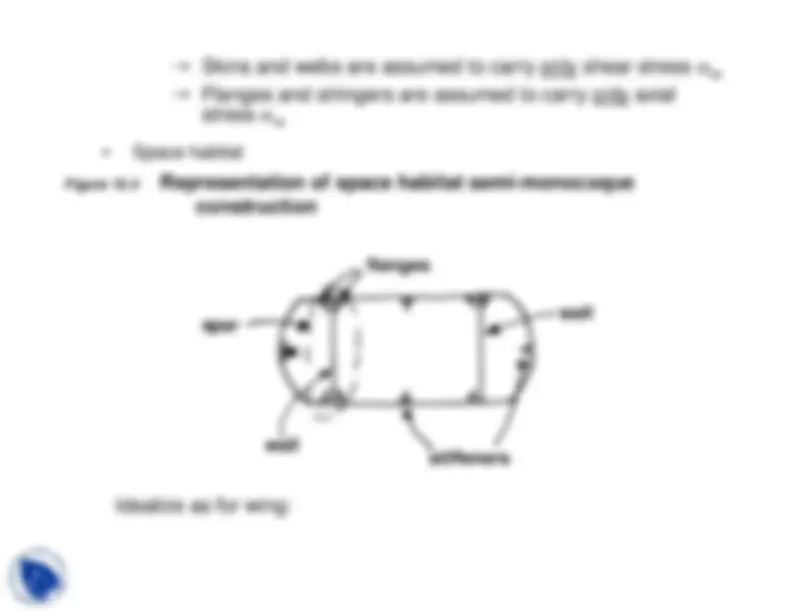
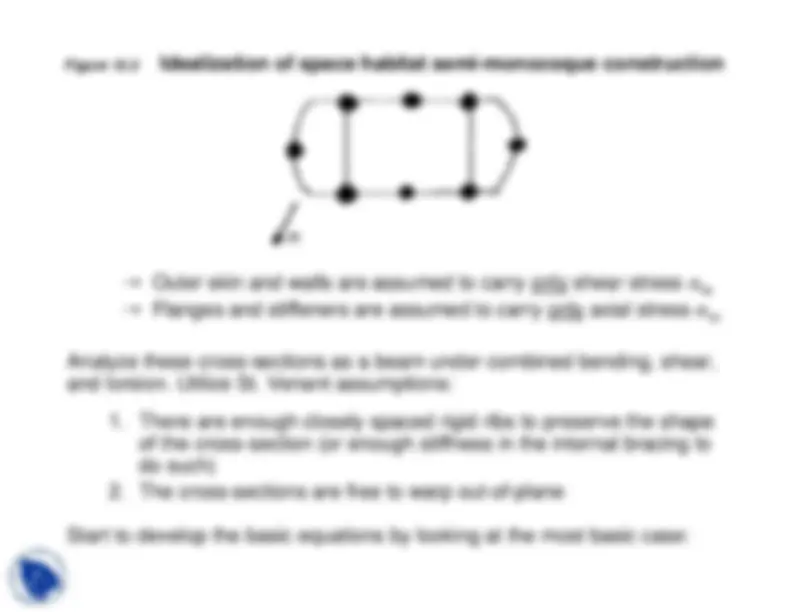
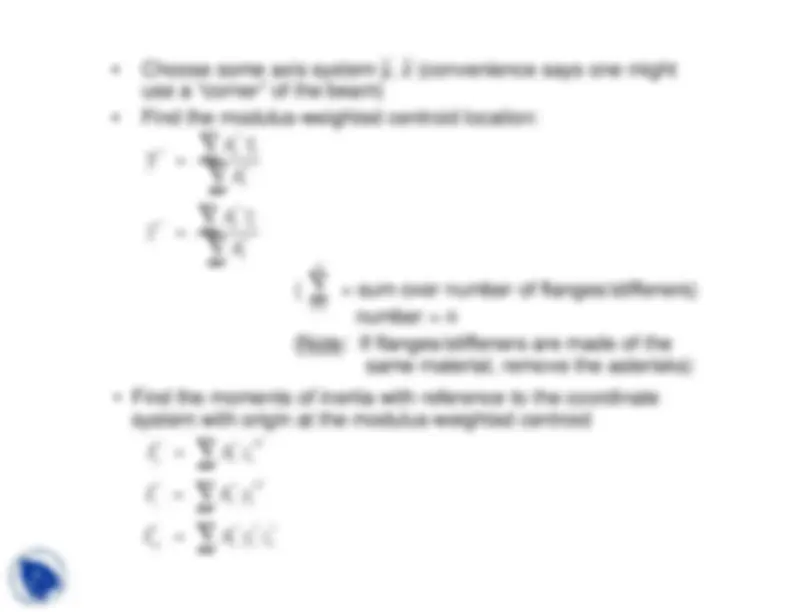
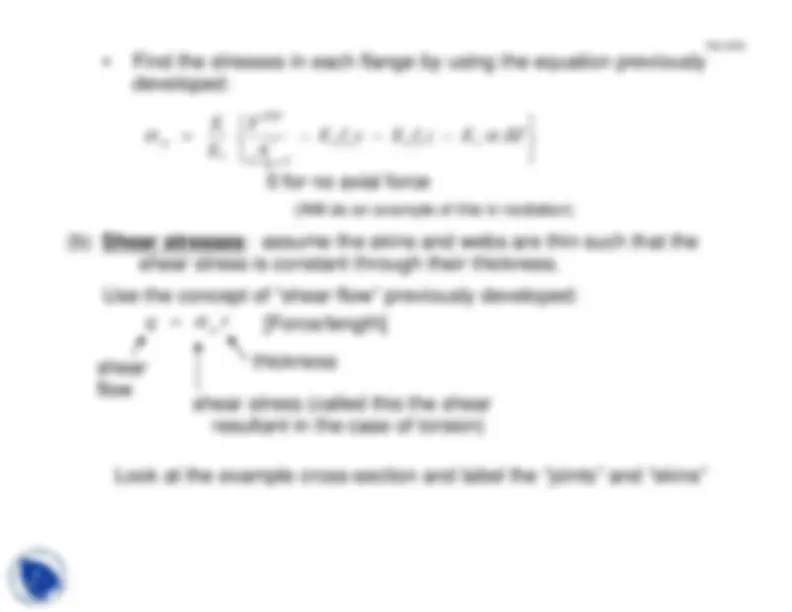
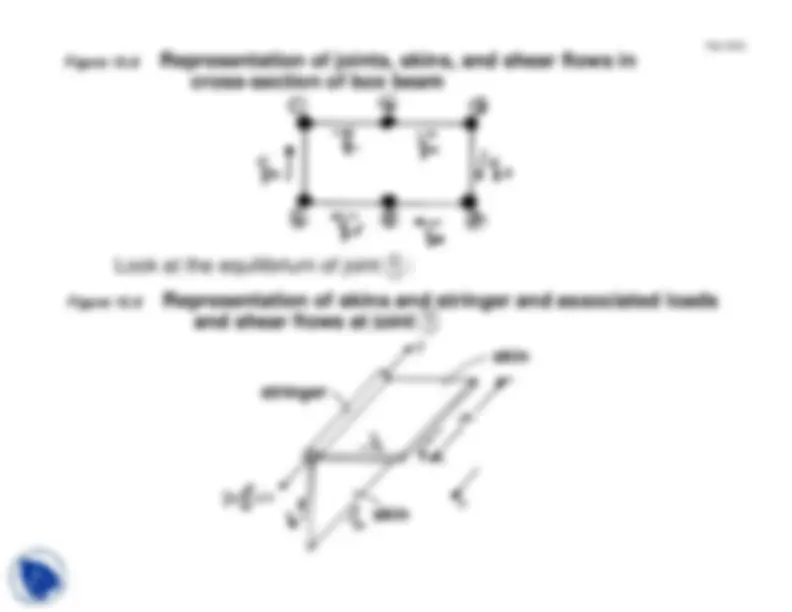
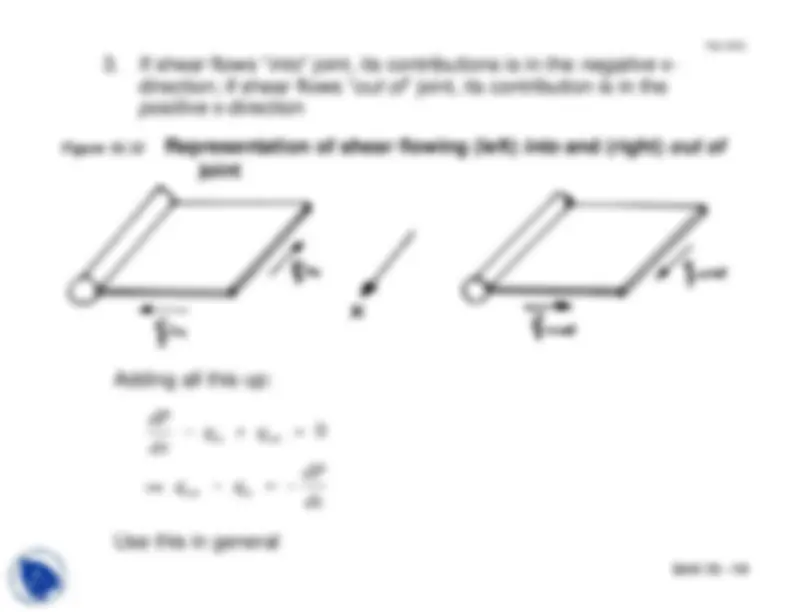
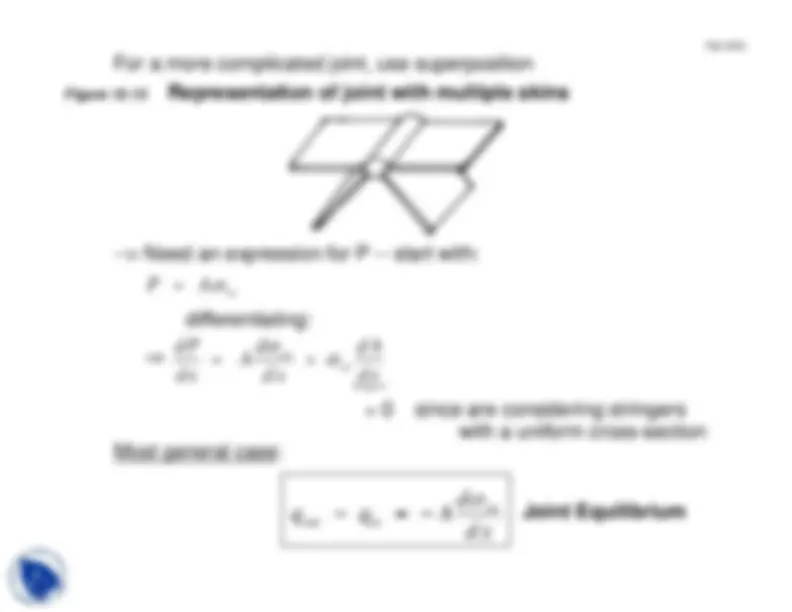
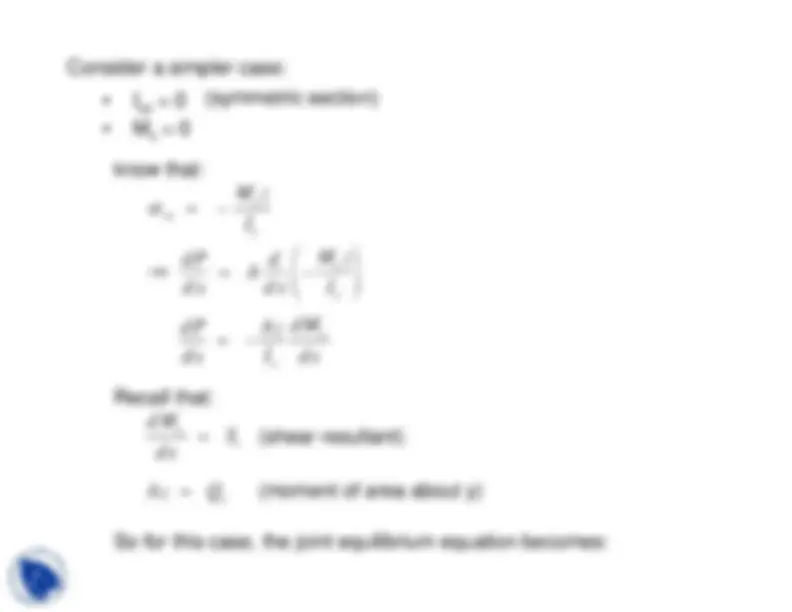

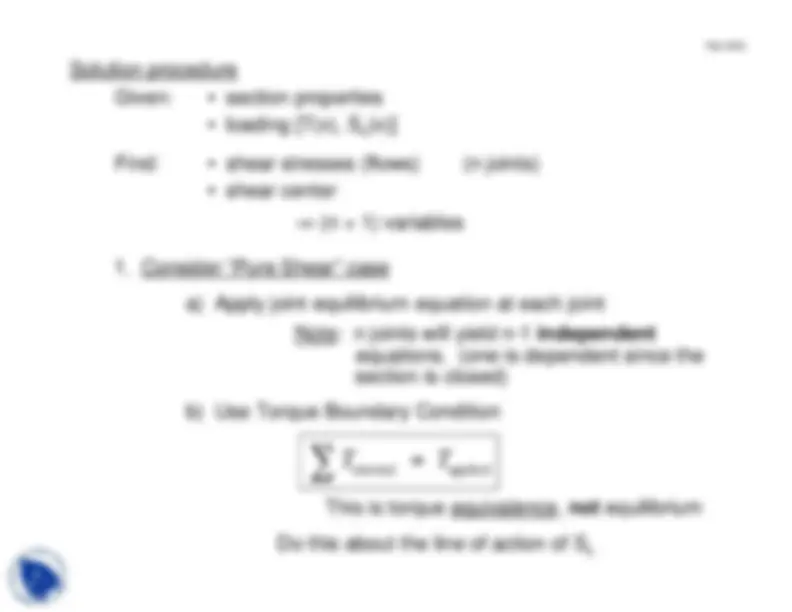
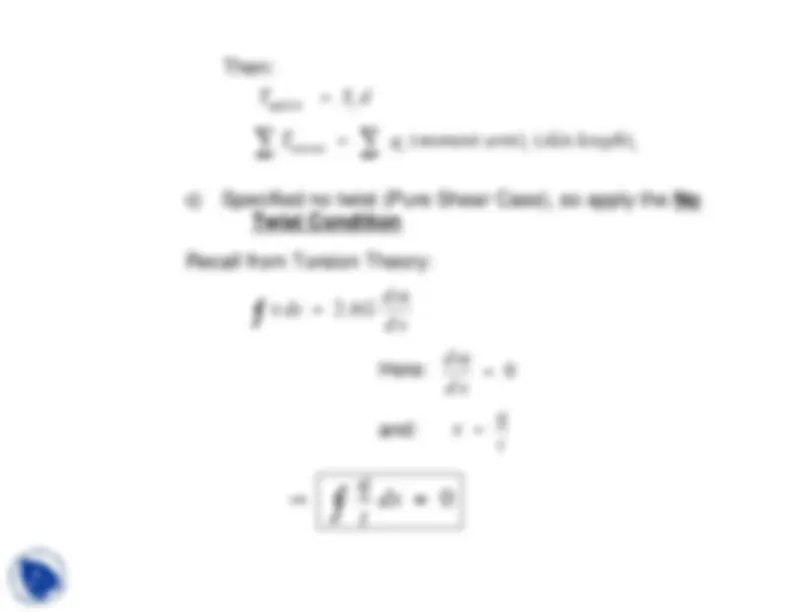
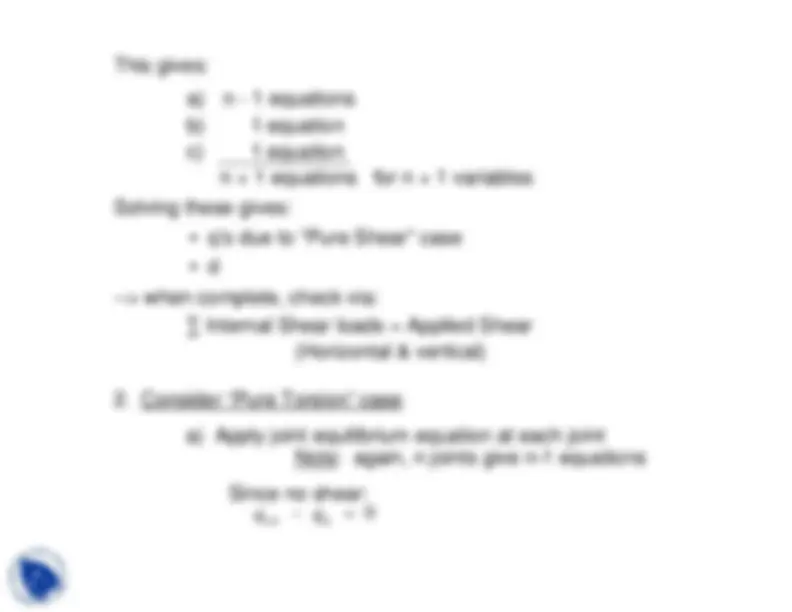
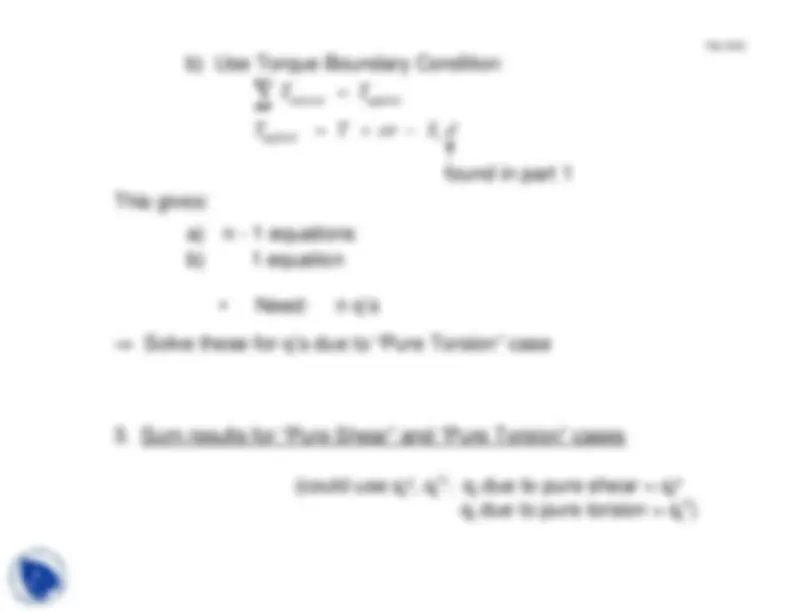


Study with the several resources on Docsity

Earn points by helping other students or get them with a premium plan


Prepare for your exams
Study with the several resources on Docsity

Earn points to download
Earn points by helping other students or get them with a premium plan
Community
Ask the community for help and clear up your study doubts
Discover the best universities in your country according to Docsity users
Free resources
Download our free guides on studying techniques, anxiety management strategies, and thesis advice from Docsity tutors
This lecture note is part of Material and Structures course. It was provided by Prof. Aparijita Singh at Andhra University. It includes: General, Aerospace, Shell, Beam, Structures, Axial, Load, Bending, Moments, Torsional, Torque, Monocoque, Construction, Shear
Typology: Exercises
1 / 22

This page cannot be seen from the preview
Don't miss anything!















Figure 15.
Examples of general aerospace shell beam structures
Aircraft Wing
Space Habitat Shell
connecting nodes
Idealize the cross-section of the shell beam into two parts:
Parts that carry extensional stress,
σ
xx
(and thus the bending and
axial loads)
Parts that carry shear stress
σ
xs
(and thus the shear loads and
torques)
Two
examples
again…
high aspect ratio wing with
semi-monocoque
construction
Notes
monocoque
construction
semi-monocoque
with
internal framework
σ
xs
σ
xx
Skins and webs are assumed to carry
only
shear stress
σ
xs
Flanges and stringers are assumed to carry
only
axial
stress
σ
xx
Space habitat
Figure 15.
Representation of space habitat semi-monocoque
construction
wall
wall
stiffeners
spar
flanges
Idealize as for wing:
Figure 15.
Idealization of space habitat semi-monocoque construction
Outer skin and walls are assumed to carry
only
shear stress
σ
xs
Flanges and stiffeners are assumed to carry
only
axial stress
σ
xx
and torsion. Utilize St. Venant assumptions: Analyze these cross-sections as a beam under combined bending, shear,
do such)of the cross-section (or enough stiffness in the internal bracing toThere are enough closely spaced rigid ribs to preserve the shape
The cross-sections are free to warp out-of-plane
Start to develop the basic equations by looking at the most basic case:
leave at zero for now The axial stress is due only to bending (and axial force if that exists --
) and is therefore independent of the twisting since the
Figure 15.7 Consider the cross-section:
Representation of cross-section of box beam
flange/stiffener i = A Area associated with
i
Find the modulus-weighted centroid (
Note
: flange/stiffeners may be
made from different materials)
use a “corner” of the beam)Choose some axis system y, z (convenience says one might
Find the modulus-weighted centroid location:
∑
y i
i
y
∑
i
∑
z i
i
z
∑
i
n
∑
= sum over number of flanges/stiffeners)
1
number = n
Note
: If flanges/stiffeners are made of the
same material, remove the asterisks)
system with origin at the modulus-weighted centroid
2
I y = ∑ A i z i
2
z
∑
i
y i
yz
= ∑ A i y i z i
Fall, 2002
Figure 15.
Representation of joints, skins, and shear flows in
cross-section of box beam
Figure 15.
Look at the equilibrium of joint 1
Representation of skins and stringer and associated loads
and shear flows at joint
stringer
skin
skin
Notes
The stringer only carries axial load
The skin carries only shear flow
( cross-section cut). This is due to equilibrium“cut”) must be the same as at the edge (theThe shear flow at the “end” of the skin (where it is σ
xy
σ
yx
)
Apply equilibrium:
∑
x
dP
dx
q 1 dx
q 6 dx
dx dP
⇒ q 1 − q 6 = −
dx
More generally note that:
Fall, 2002
If shear flows “
into
” joint, its contributions is in the
negative
x-
direction; if shear flows “
out of
” joint, its contribution is in the
positive
x-direction
Figure 15.
Representation of shear flowing (left)
into
and (right)
out of
joint
Adding all this up:
dP
q in
q out
dx
dP
q out
q in
dx
Use this in general
Unit 15 - 14
Fall, 2002
For a more complicated joint, use superposition
Figure 15.
Representation of joint with multiple skins
--> Need an expression for P -- start with:
xx^
differentiating:
d P
d
xx^
d A
xx
d x
d x
d x = 0
since are considering stringers
with a uniform cross-section
Most general case
out
in
xx^
Joint Equilibrium
Q S
q
out
−
q
in
=
y
z
Symmetric section
I y
z
= 0
Shear stresses arise due to two reasons: Now have an equation for the equilibrium of shear stresses at the joints.
Shear resultant
Twisting
It is convenient to break up the problem into two separate problems:In general have at any cross-section:
Unit 15 - 17
(1) “Pure Shear”
(2) “Pure Twist”
there is no twisting at shear center so shear resultant acts
superposition)--> Solve each problem separately, then add the results (use
Condition
: The two force systems (S
z ,
T
and S
z ’ ,
T
’ ) must be
equipollent
Figure 15.
Demonstration of equipollence of force systems
Fall, 2002
Solution procedure
Given:
section properties
loading [T(x), S
z (x)]
Find:
shear stresses (flows)
(n joints)
shear center
(n + 1) variables
Consider
Pure Shear
case
a) Apply joint equilibrium equation at each joint
Note
: n joints will yield n-
independent
section is closed) equations. (one is dependent since the
b) Use Torque Boundary Condition
internal
applied
This is torque
equivalence
not
equilibrium
Do this about the line of action of S
z
Then:
applied
z
internal
q i ( moment arm
i ( skin length
i
c)
Specified no twist (Pure Shear Case), so apply the
No
Twist Condition
Recall from Torsion Theory:
ds
d
d x
d
α
Here:
d x
and:
t q